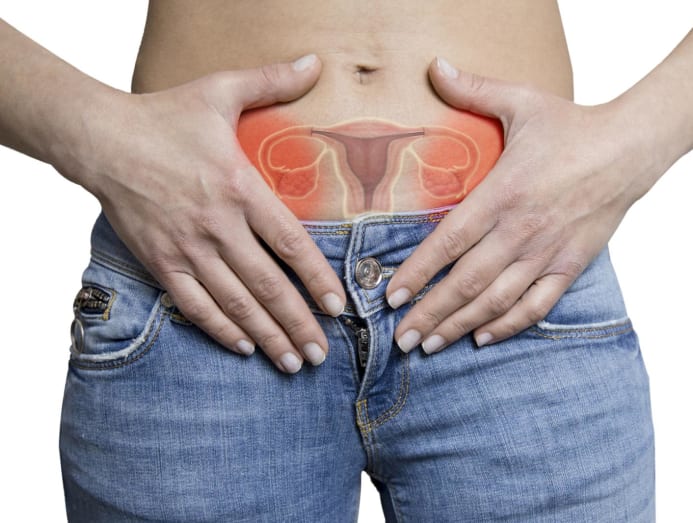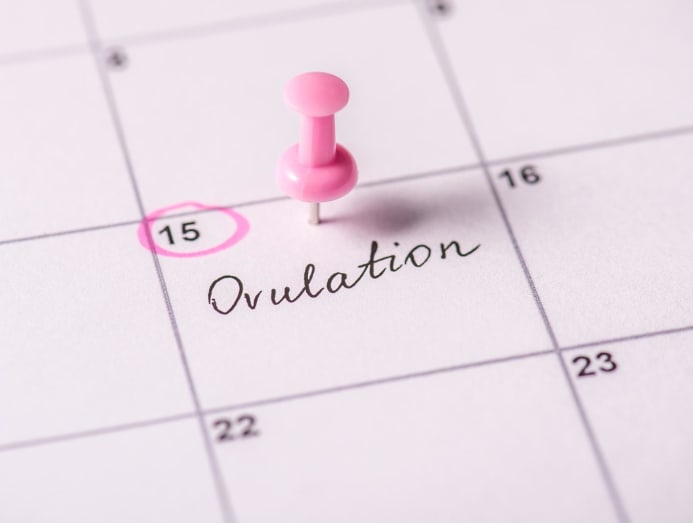The mysteries of ovulation pain: Why does it hurt before a period begins?
The release of an egg, despite being a routine biological process, is a dramatic physical event.

(Art: The New York Times/Sara Andreasson)
That mysterious twinge on one side of your lower abdomen that isn’t occurring alongside your period? The one that keeps coming back, every month and roughly in the middle of your menstrual cycle?
That sensation is most likely pain associated with ovulation or as it’s known in the medical world, mittelschmerz (the German term for “middle pain”).
It’s difficult to pin down just how prevalent ovulation pain is because, in most cases, it’s so mild that women don’t report it, said Dr Jenna Turocy, an associate professor of obstetrics and gynaecologyat Columbia University.
Some estimates suggest as many as 40 per cent of women of reproductive age feel it almost every month. It can also be difficult to identify; the sensation might linger for a few minutes or it could last for hours. It sometimes feels like mild cramping or, for others, it’s so painful that it gets confused with appendicitis.

There is very little research on mittelschmerz, with only a handful of published papers on the topic, many of which either date back to the early 1900s or are small and focused on rare medical complications, said Dr Daniel Breitkopf, a gynaecologistat the Mayo Clinic.
“There isn’t a lot on the why,” he said. “And very little of the research has to do with the day-to-day experience.” It’s still unclear, for example, why some women don’t experience pain with ovulation at all.
WHY CAN OVULATION HURT?
Ovulation is a fairly complex process, said Dr Elizabeth Ginsburg, vice president of the American Society for Reproductive Medicine and a professor of obstetrics and gynaecologyat Harvard Medical School.
It involves one follicle (a fluid-filled sac in the ovary that carries a single egg) growing drastically in size, from less than four millimetres to over 10 millimetres, in a matter of days. When the follicle has matured, the egg pushes out through its surface.
“Every ovulation is essentially a ruptured cyst,” Dr Ginsburg said. Ultrasounds have shown that ovulation coincides with a small explosion of fluid and sometimes blood on the surface of the ovary, Dr Ginsburg said. Because ovulation takes place in either one of the two ovaries, those who feel the pain will notice that it occurs on alternating sides from one cycle to the next.
“My patients mostly have infertility and are trying to get pregnant, so they’re kind of reassured when they feel this pain”, which is often an indication of their highest chance in a cycle to become pregnant, Dr Ginsburg said.
It’s not clear which exact part of the ovulation process might cause pain. One study from 1980, which measured hormone levels and follicle size, found that women reported pain before the egg had emerged, suggesting that the pain might be a “pre-ovulatory event”. One explanation is that the expansion of the follicle can lead to some cramping, Dr Ginsburg said.
There are two other potential culprits, said Dr Aparna Sridhar, an OB-GYN at UCLA Health: Luteinising hormone, called LH, which triggers follicle rupture, and prostaglandins, which are hormone-like substances that spur muscle contractions (and thus, sometimes pain), including in surrounding muscles like the bowels. The surge in LH invites a surge in prostaglandins, she said.
Teenagers who have just started menstruating, for example, tend not to feel ovulatory pain, Dr Sridhar said. That’s most likely because, though their follicles expand, they don’t ovulate at that point in their lives and therefore, don’t have high levels of LH or prostaglandins.

WHAT CAN YOU DO FOR THE PAIN?
Ovulation pain should not be debilitating, and severe pain that hasn’t subsided after 24 hours is a sign of a larger problem, Dr Breitkopf said.
“I’ve seen that when people come in for this, it’s gotten to the point where it’s pretty bad and it’s affecting their life,” he said. “Sometimes, it’s bad enough that they may have to take time off work.”
In some cases, for example, the pain might be indicative of excessive internal bleeding from the ruptured follicle, which might require surgery. Women with endometriosis or those who have had previous surgery that scarred their ovaries tend to feel more acute pain around ovulation.
Experts say that the medicine and treatment that help with period cramps should also help manage most cases of mild ovulation pain, like over-the-counter pain medications. “A heat pack can be helpful, too,” Dr Turocy said.
For those who aren’t trying to get pregnant and for whom the pain gets in the way of day-to-day activities, hormonal birth control is another option because it tends to stop ovulation altogether, Dr Sridhar said. “That can make life easier.”
By Alisha Haridasani Gupta © The New York Times Company
The article originally appeared in The New York Times.



